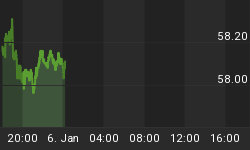Is this dollar rally doomed?
Chairman Greenspan has seen what he wanted some de-gearing in the global financial system over the past few days and weeks. But this "healthy" development may be setting the stage for a much weaker Dollar and more volatility later this year.
The Fed Chairman has been concerned about the number of Hedge Funds and other financial institutions involved in the carry trade. That is those who: buying assets on leverage with an expected yield higher than cheap dollar borrowing. Hedge Funds and others have loaded up on Corporate Bonds, emerging market debt, and junk bonds of various currencies, all financed with dollar debt at 3.0% or less. The gearing of assets which yield more than the dollar borrowings is common. And falls in the dollar since 2002 has made these cross-currency trades profitable.
Carry trades were particularly helpful last year, allowing many hedge funds to generate a positive return in 2004, a year which otherwise had little to offer in equity markets until the late stock rally, which came after the November election.
Unfortunately, this year the carry trades have not gone well. The dollar has rallied and the result is that hedge fund returns have suffered. Just look at this Hedge Fund index from S&P...

Since Dec.2004 and again since late March 2005, the Hedge Funds in this index have done badly. The Hedge Fund index is now lagging far behind the S&P 500 (SPX), and the average fund in the index is now off about 15% from its early December high. What is troubing these funds, and what have they lagged so much?
Significantly, these drops in performance have shown some correlation with periods of Dollar strength.

The blue line that I have added above shows the movements in the Euro (XEU), and these also correlate well with the index, particularly the spikes and drops in late Dec.2004 and in March 2005. What's going on here? Why are these movements correlated? Unfortunately, I do not have the composition of the S&P index for Hedge Funds (xx:1609730 in my chart, as charted by BigCharts.com.) But what I do know is that many funds are using alot of dollar debt to finance assets, including those priced in Euros and other currencies. Thus, since they are borrowing in dollars, they tend to benefit from a drop in the dollar, and a rally in non-dollar currencies helps their asset values grow faster than their debt.
The markets have continued to be treacherous. Last week, we saw the reversals related to the GM and Ford trades, where alot of Hedge funds got it wrong. I am hearing from my friends invested in the Hedge Fund sector that performance in March and April was bad, with many funds showing a negative return, and now May looks worse still. Is it any surprise that alot of funds are getting hit with redemptions?
Here's what Sunday's Times had to say: "GLG, a hedge fund started in 1995 by a group of former Goldman Sachs bankers, has in recent weeks had demands for more than $500m (£270m) from investors wanting to pull out of its $4 billion market-neutral fund. The predicament of GLG, the biggest group in Europe, with $13 billion under management, highlights the stress being felt at many hedge funds in Europe and America after four months of deteriorating results." (Timesonline article of May 15, 2005)
So how does this effect the Dollar and commodity prices?
Well think of many of those Hedge fund assets: US Corporate bonds, and more interestingly, foreign currency denominated debt, emerging market bonds, and commodities. Many are denominated in currencies other than US dollar. Funds have been financing those non-dollar assets with cheap dollar debt, hoping for a "double gain": a yield pick up (when the assets they are holding assets have a return in excess of the low dollar borrowing costs.) Last year, when the dollar was weak, there was a nice bonus, a currency gain as the dollar fell. But in 2005, the dollar has stopped falling.
Then, last week there was a stronger dollar at the same time as many big fund experienced losses on debt holdings in GM/Ford. HF risk managers must have called a halt to the losses, as their risk limits were hit. Traders at the funds were told to reduce gearing. Last week, we heard there was a wave of selling of all kinds of assets, particularly GM and Ford debt. There were fears that Hedge Funds were going to go down, and so a massive global degearing happened. Assets of various currencies were dumped, and alot of the cash raised went to repay the short term debt. Where assets were in other currencies, a currency transaction was needed. Cash from sale of assets of other currencies was converted into US dollars, and the dollar debt was repaid. Result: the total size of the global carry trade has been reduced, and all that liquidation helped the dollar as money was converted and dollar denominated borrowings were retired.
Once the dollar has gone far enough, and the current wave of degearing is complete, the pressure on the funds will ease, and they will again be ready to return to the carry trade. When that happens in the next few days or weeks, I predict that, the dollar will renew its slide. And if that re-gearing happens to comes just as the Chinese begin to revalue their currency, the slide may be sharp indeed.
Watch for it. We may be in for some very volatile times.
















